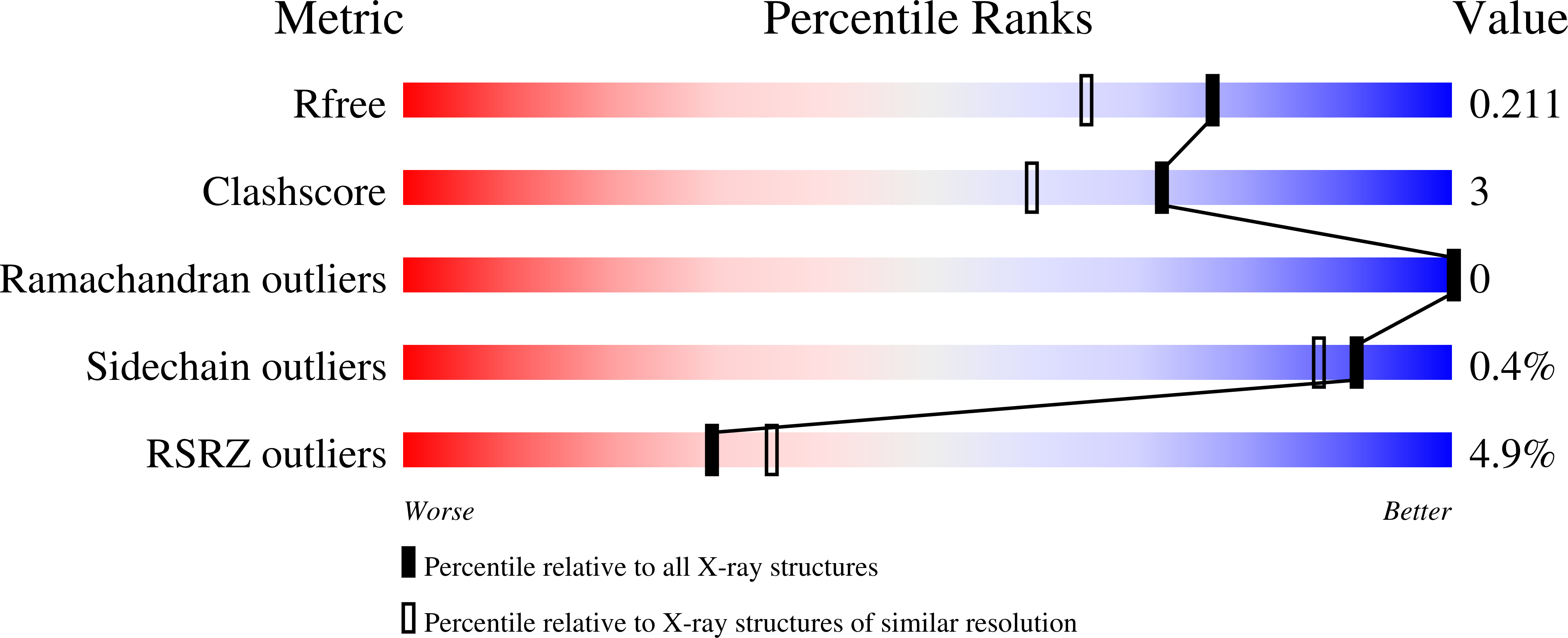Insights into the molecular basis for the carbenicillinase activity of PSE-4 beta-lactamase from crystallographic and kinetic studies.
Lim, D., Sanschagrin, F., Passmore, L., De Castro, L., Levesque, R.C., Strynadka, N.C.(2001) Biochemistry 40: 395-402
- PubMed: 11148033
- DOI: https://doi.org/10.1021/bi001653v
- Primary Citation of Related Structures:
1G68, 1G6A - PubMed Abstract:
PSE-4 is a class A beta-lactamase produced by strains of Pseudomonas aeruginosa and is highly active for the penicillin derivative carbenicillin. The crystal structure of the wild-type PSE-4 carbenicillinase has been determined to 1.95 A resolution by molecular replacement and represents the first structure of a carbenicillinase published to date. A superposition of the PSE-4 structure with that of TEM-1 shows a rms deviation of 1.3 A for 263 Calpha atoms. Most carbenicillinases are unique among class A beta-lactamases in that residue 234 is an arginine (ABL standard numbering scheme), while in all other class A enzymes this residue is a lysine. Kinetic characterization of a R234K PSE-4 mutant reveals a 50-fold reduction in k(cat)/K(m) and confirms the importance of Arg 234 for carbenicillinase activity. A comparison of the structure of the R234K mutant refined to 1.75 A resolution with the wild-type structure shows that Arg 234 stabilizes an alternate conformation of the Ser 130 side chain, not seen in other class A beta-lactamase structures. Our molecular modeling studies suggest that the position of a bound carbenicillin would be shifted relative to that of a bound benzylpenicillin in order to avoid a steric clash between the carbenicillin alpha-carboxylate group and the conserved side chain of Asn 170. The alternate conformation of the catalytic Ser 130 in wild-type PSE-4 may be involved in accommodating this shift in the bound substrate position.
Organizational Affiliation:
Department of Biochemistry and Molecular Biology, University of British Columbia, Vancouver, British Columbia, Canada.















